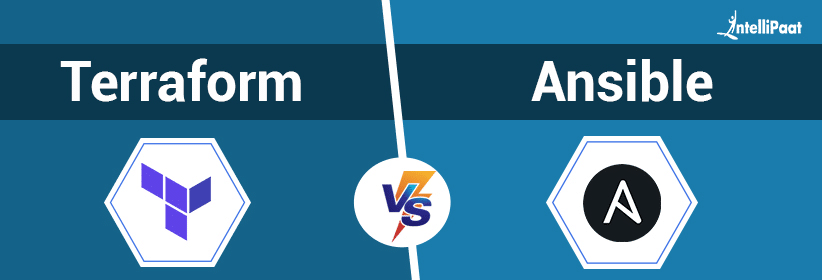As the DevOps industry is gaining momentum, the tools, Ansible and Terraform, have also witnessed an increase in their popularity. Both the tools help in deploying the code and infrastructure: While Ansible acts as a configuration management solution, Terraform is a service orchestration tool.
In this blog, we will focus on the following topics:
- Understanding Terraform
- Features of Terraform
- Understanding Ansible
- Features of Ansible
- Terraform vs Ansible
- Terraform vs Ansible for Provisioning
- Terraform for Provisioning
- Ansible for Provisioning
- Final Note
Understanding Terraform
Developed and offered by HashiCorp, Terraform is an open-source Infrastructure as Code that allows users to manage cloud services through a language named HashiCorp Configuration Language (HCL). Currently, Terraform supports 200 providers, including public cloud, private cloud, and SaaS providers.
As a beginner, you might find the below tutorial on Terraform to be useful:
In Terraform, the final state is defined directly. The only drawback is that as Terraform is declarative in nature, the final result is accessible only to providers. Therefore, if users need to access the end state, then they must install and configure the deployed applications using the scripts and tools.
Along with initial deployment, Terraform also performs orchestration. This functionality is possible because of its:
- Execution plans: Users can specify the steps to be performed, along with the order of execution.
- Resource graphs: Users can visualize the plan, which is much more than the performance of Ansible.
Terraform code is efficient enough in spinning up the environments; hence, it quickly describes the resources that make up a stack.
When we make a comparison as Ansible vs Terraform, we get to know that Terraform works great in automating provisioning processes and also aids in the process of moving to cloud management resources.
The main difference between Terraform and Ansible is that Terraform is declarative in defining the process by which results can be achieved. While using Terraform, code always represents the present status of the infrastructure.
#cloud computing #devops
